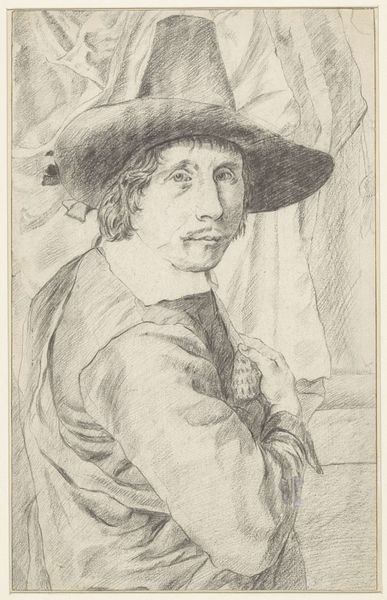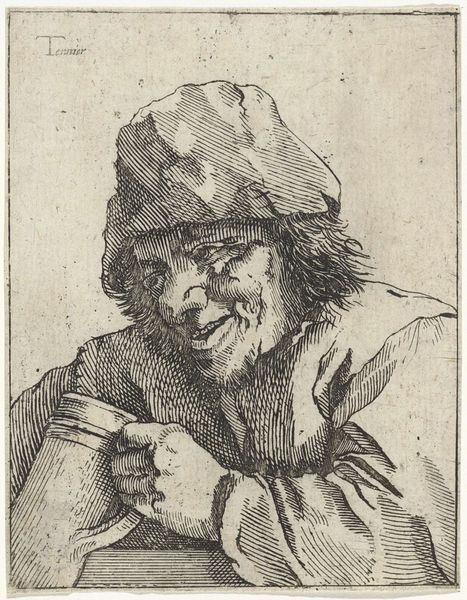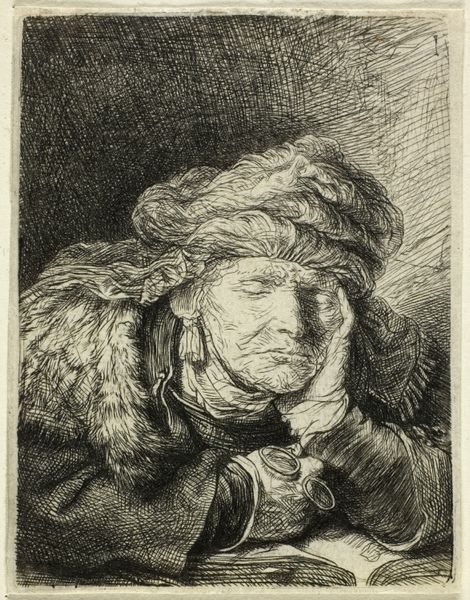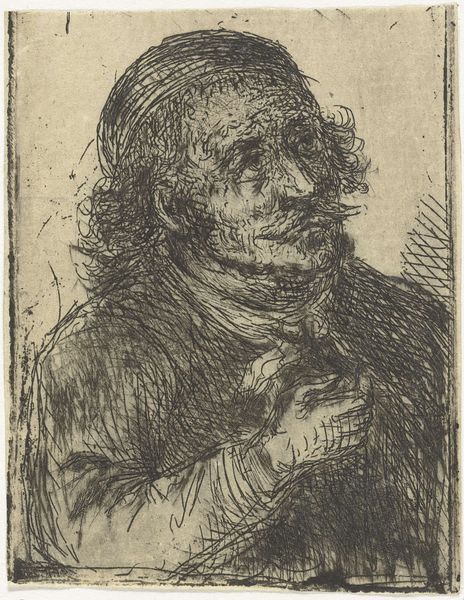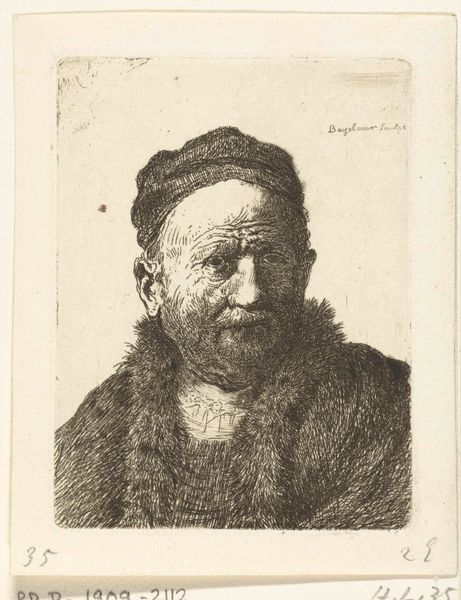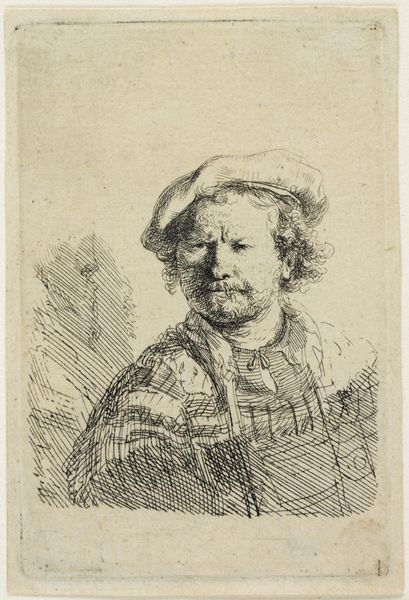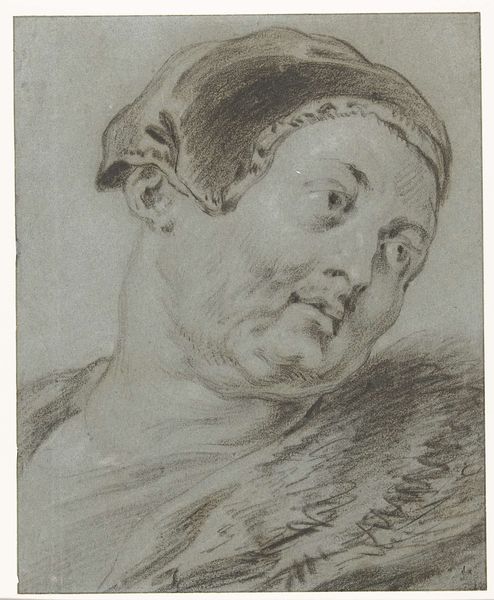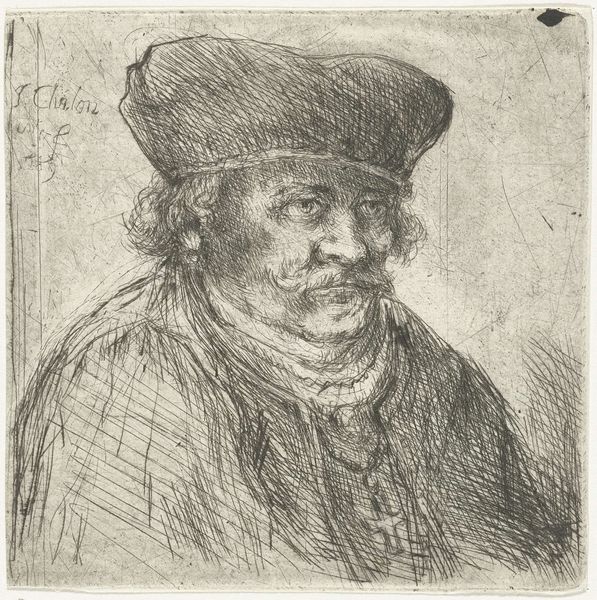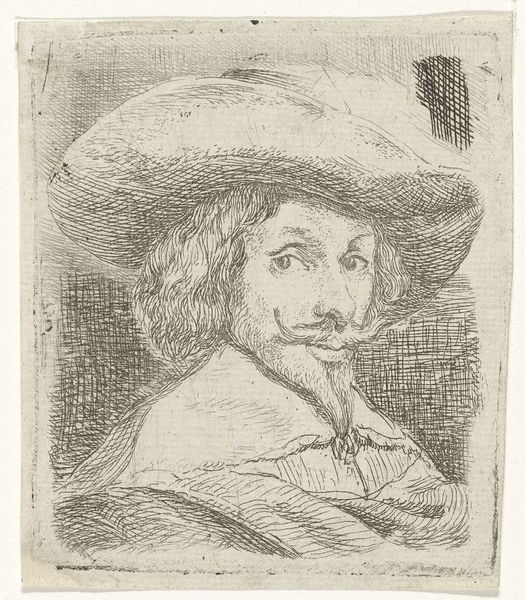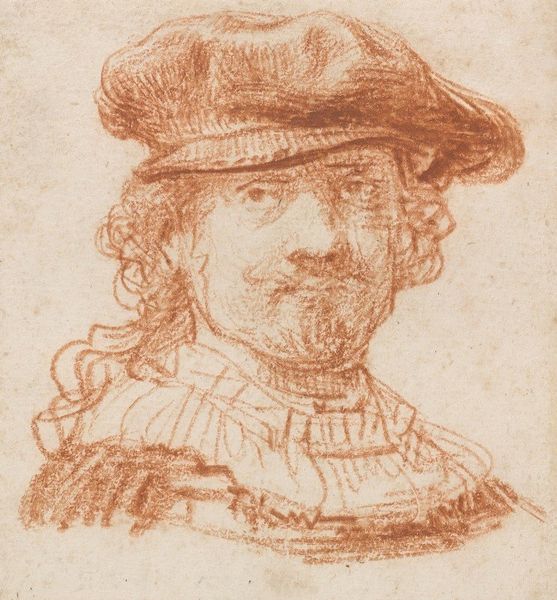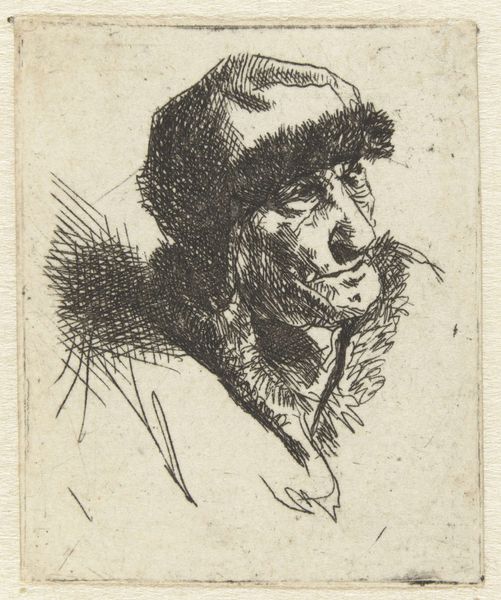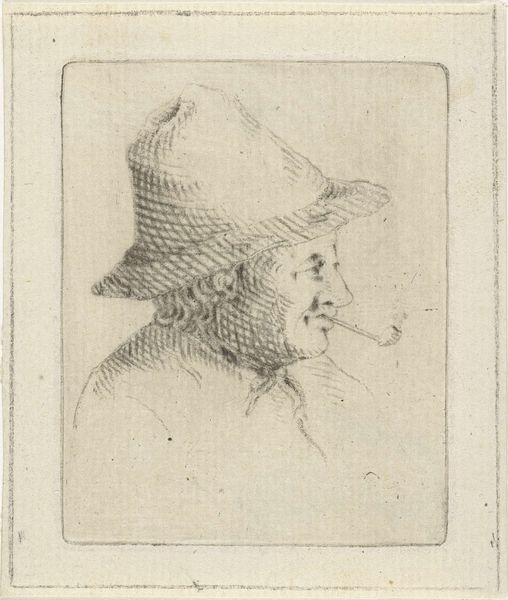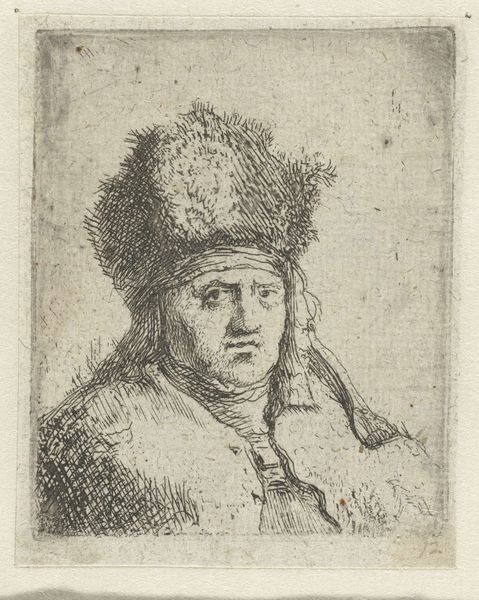
Dimensions: height 117 mm, width 63 mm
Copyright: Rijks Museum: Open Domain
Pierre François Basan made this self-portrait etching sometime in the 18th century. It demonstrates the period's fascination with the art and persona of Rembrandt van Rijn, who lived a century before. Note Basan’s clothing. This turban and loose fitting jacket is meant to reference the clothing Rembrandt used to wear in his self-portraits. Why would an 18th century French artist want to dress up like a 17th century Dutch artist? In the 1700s, art academies had become powerful institutions across Europe. These academies dictated what good art should look like. Rembrandt’s art didn’t fit those standards but he was still seen as a genius. By portraying himself as Rembrandt, Basan is perhaps suggesting that true artistic genius exists outside of academic taste. Art historians like myself use archival sources like newspapers, letters, and exhibition reviews to understand these kinds of institutional power dynamics. We can better understand how artists create meaning, and how art gains value, by looking at its social context.
Comments
No comments
Be the first to comment and join the conversation on the ultimate creative platform.
